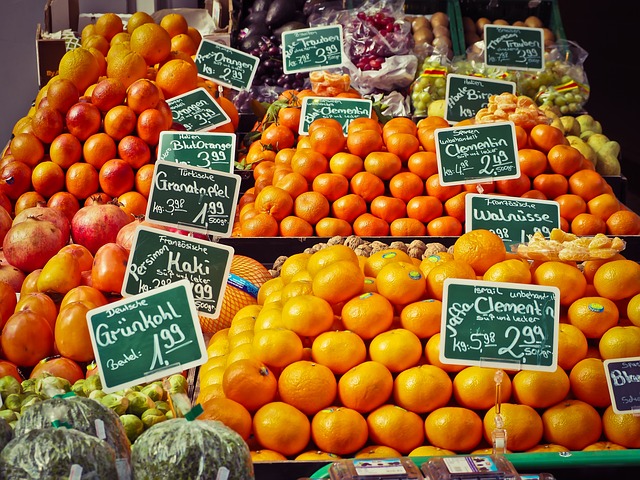Gardening enthusiasts can significantly aid environmental sustainability by composting yard waste instead of sending it to landfills. Composting not only enriches garden soil with valuable humus but also serves as an eco-friendly and cost-effective alternative to synthetic fertilizers. A well-balanced compost, achieved by combining green (nitrogen-rich) and brown (carbon-rich) organic materials in a 30:1 ratio, supports a diverse microbial ecosystem that accelerates decomposition and nutrient cycling. Regularly turning the compost and managing moisture levels optimize aeration and the decomposition process, leading to the production of high-quality humus for soil enrichment. Yard waste removal and recycling through composting thus play a crucial role in reducing environmental impact, minimizing landfill use, and promoting ecological health. By following best practices such as strategic placement and consistent maintenance of compost bins or piles, gardeners can effectively manage yard waste and contribute to sustainable waste management. This approach not only improves garden soil but also supports a more sustainable and productive gardening practice.
Embark on a greener path with compost creation, an essential practice for garden enthusiasts eager to enhance soil health and reduce yard waste. This article delves into the transformative process of composting, offering insights on efficient yard waste management through composting. We’ll guide you step-by-step in setting up your home compost system, ensuring effective yard waste recycling. Additionally, discover practical tips and tricks to maximize your compost’s potential, making it a cornerstone of sustainable gardening practices. Join us as we turn your yard waste into a valuable resource for vibrant plant growth.
- Efficient Yard Waste Management: The Role of Composting for Garden Enthusiasts
- Step-by-Step Guide to Setting Up Your Home Compost System for Yard Waste Recycling
- Maximizing Your Compost: Tips and Tricks for Effective Yard Waste Removal and Compost Utilization in Gardening
Efficient Yard Waste Management: The Role of Composting for Garden Enthusiasts

Yard waste removal and recycling through composting are pivotal practices for garden enthusiasts seeking to enhance their gardening efforts while promoting environmental sustainability. Composting allows for the transformation of organic matter such as leaves, grass clippings, and kitchen scraps into nutrient-rich humus, which can be utilized to enrich garden soils. This not only reduces the volume of waste that would otherwise end up in landfills but also provides a cost-effective and eco-friendly alternative to synthetic fertilizers. By incorporating compost into their gardens, enthusiasts can improve soil structure, increase soil fertility, and foster a healthier microbial community that supports plant growth. Moreover, the process of composting helps in managing yard waste by breaking down organic materials into smaller components, making it easier to store or use as needed. Implementing an efficient composting system is not only beneficial for the garden but also aligns with broader waste management strategies, contributing to a greener and more sustainable environment.
Effective composting begins with the proper selection and maintenance of a compost bin or pile. Garden enthusiasts should aim to achieve a balanced mix of green (nitrogen-rich) and brown (carbon-rich) materials. Green materials include kitchen waste like fruit and vegetable peels, coffee grounds, and fresh grass clippings, while brown materials consist of dried leaves, straw, and shredded paper. The ideal compost pile should be as diverse as possible in terms of material types to ensure a balance of nutrients and microbial activity. Regular turning of the compost pile or bin enhances aeration and speeds up the decomposition process. Monitoring moisture levels and ensuring that the compost remains damp but not soggy is crucial for maintaining an optimal environment for decomposers. By adopting yard waste removal and recycling through composting, garden enthusiasts can significantly reduce their environmental footprint while nurturing thriving gardens.
Step-by-Step Guide to Setting Up Your Home Compost System for Yard Waste Recycling

Yard waste removal and recycling through a home compost system is an eco-friendly way to manage organic materials such as leaves, grass clippings, and kitchen scraps. To set up your own compost system, start by selecting an appropriate location in your yard that is convenient for you to access yet away from areas where you frequently walk or entertain. Ensure the spot is flat and receives partial sunlight to full sun, which is conducive to microbial activity that breaks down organic matter.
Begin by clearing the chosen area of debris and sod. You can create a simple compost bin using enclosures made from wood, chicken wire, or recycled plastic containers. For a traditional heap, mark out an area about three square feet and delineate it with stakes and twine. Next, add a mix of browns and greens: ‘browns’ are carbon-rich materials like dried leaves, straw, or shredded paper, while ‘greens’ are nitrogen-rich materials such as fresh grass clippings, kitchen food waste, and coffee grounds. Aim for a balance of these components to maintain an optimal carbon-to-nitrogen ratio, typically around 30:1. Regularly turn the compost to aerate it, which helps prevent odors and ensures even decomposition. Monitor moisture levels; the compost should be as moist as a wrung-out sponge. By following these steps, you’ll transform your yard waste into nutrient-rich humus that can enhance your garden’s soil, reducing the need for chemical fertilizers and contributing to sustainable waste management practices.
Maximizing Your Compost: Tips and Tricks for Effective Yard Waste Removal and Compost Utilization in Gardening

Garden enthusiasts looking to enhance their composting practices and effectively manage yard waste can benefit from a variety of tips and tricks that not only streamline the composting process but also enrich their gardens. To initiate efficient composting, it’s crucial to select a suitable compost bin or pile location, one that is convenient for adding materials and monitoring decomposition. Position it near a water source to keep the compost moist, and ensure it’s accessible for turning, which aerates the pile and accelerates the breakdown of organic matter.
A balanced compost contains a mix of green (nitrogen-rich) and brown (carbon-rich) materials. Kitchen scraps, grass clippings, and coffee grounds are examples of greens, while dried leaves, straw, and cardboard serve as browns. Balancing these components helps in creating a compost that is rich in nutrients, which can then be used to nourish your garden soil. Yard waste recycling through composting not only reduces the amount of waste sent to landfills but also provides a valuable resource for gardening. By incorporating finished compost into your garden beds, you enhance soil structure and fertility, which in turn supports healthy plant growth. Regularly monitor the moisture level, turning the pile every week or two to ensure aeration and even decomposition. This hands-on approach to yard waste removal and compost utilization will yield a dark, crumbly, and nutrient-dense material that can significantly benefit your garden’s ecosystem.
Garden enthusiasts can significantly contribute to sustainability by adopting compost creation as a cornerstone of yard waste management. The process not only enhances soil health but also plays a pivotal role in reducing the environmental impact of waste. By following a step-by-step guide to setting up a home compost system, gardeners can efficiently recycle yard waste, transforming organic materials into valuable compost for their gardens. Maximizing compost effectiveness through strategic tips and tricks further underscores the benefits of this eco-friendly practice. Embracing compost creation is an effective means for garden enthusiasts to engage in yard waste removal and recycling, fostering a healthier and more sustainable gardening environment.
